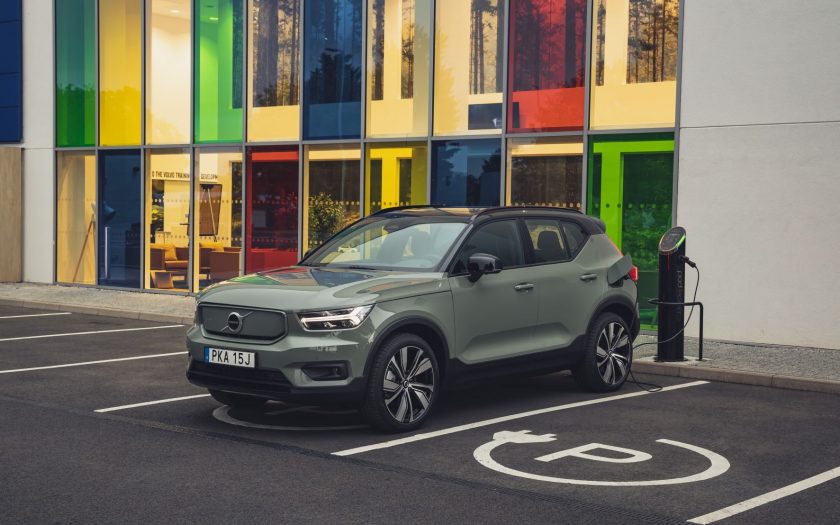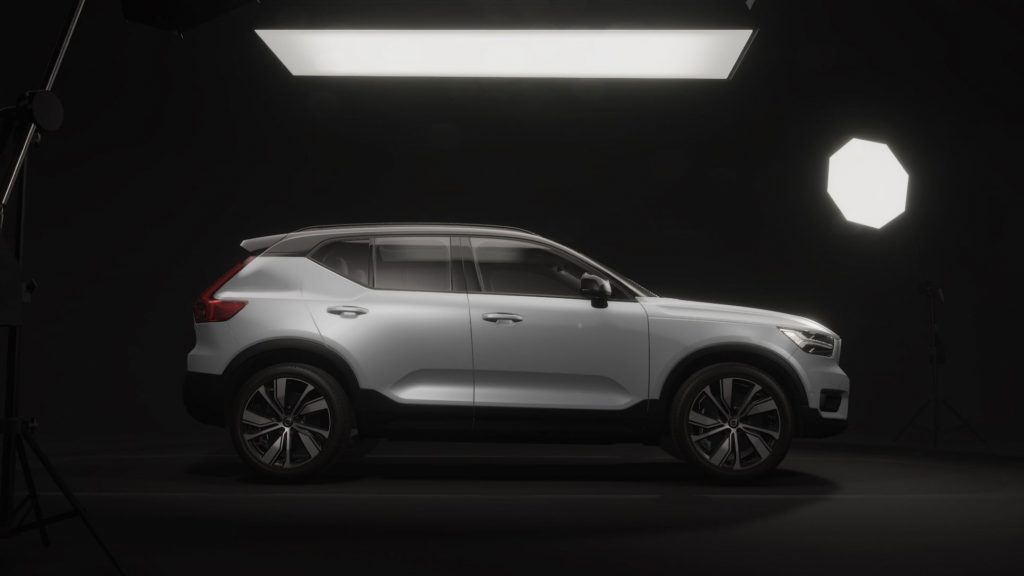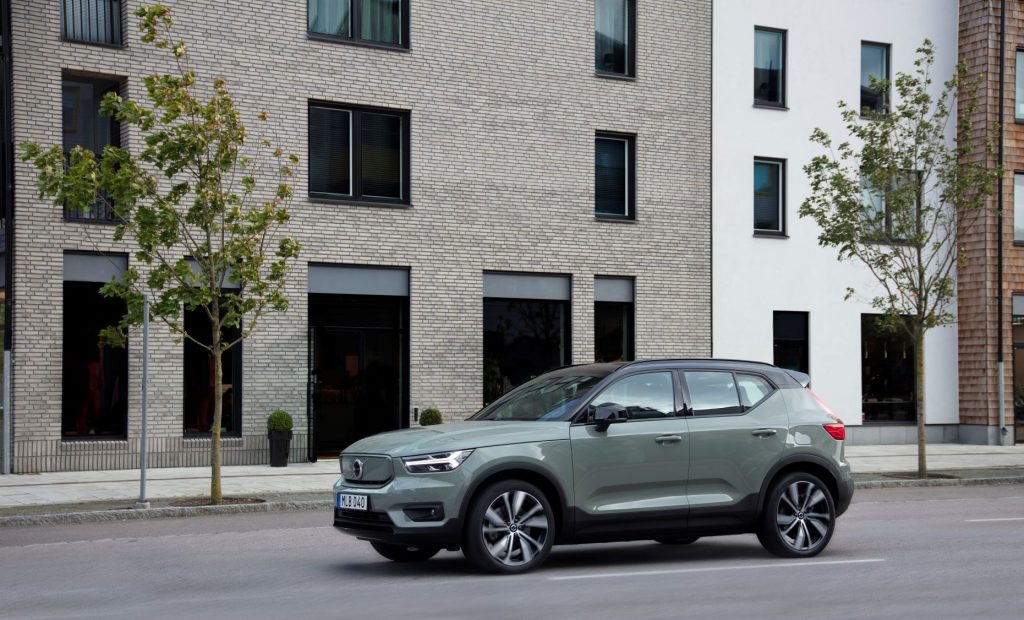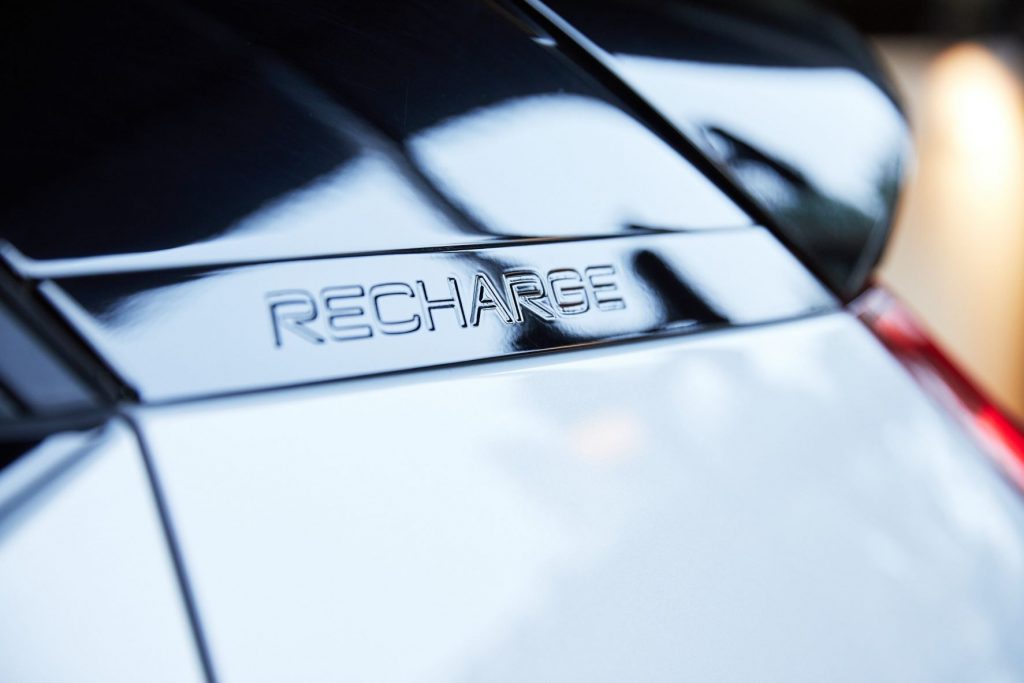Chris Riley tests the 2022 Volvo XC40 Recharge Pure Electric with pricing, specs, ride and handling, safety, verdict and everything the over-50 driver needs to know.
Summary: The Volvo XC40 Recharge Pure Electric shows that EVs are getting better and easier to live with, but there are still frustrations.
2022 Volvo XC40 Recharge Pure Electric
Pricing: $72,990 (single motor, plus on road costs), $79,990 (twin motor, plus on road costs)
Warranty: Five-years, unlimited km. Eight-years roadside assistance. Eight-year battery warranty
Safety: 5-star ANCAP
Engine: Electric
Battery: Lithium ion, 78kWh
Charging time: 4320 minutes (mains power), 40 minutes (quick charge, 200V 50kW)
Power: 300kW
Torque: 660Nm
Transmission: single gear automatic, all-wheel drive
Body: 4425mm (long); 1910mm (wide); 1651mm (high)
Weight: 2158kg
Towing capacity: 1500kg
Wheels: 20-inch alloy
Tyres: 245/45R20
Ground clearance: 171mm
Turning circle: 11.8m
Claimed range: 418km
Official consumption: 25.5kWh/100km
Consumption on test: 21.7kWh/100km (3650km)
seniordriver consumption on test: 21.0kWh/100km (373km)
seniordriver range on test: 380km (80 percent battery charge)
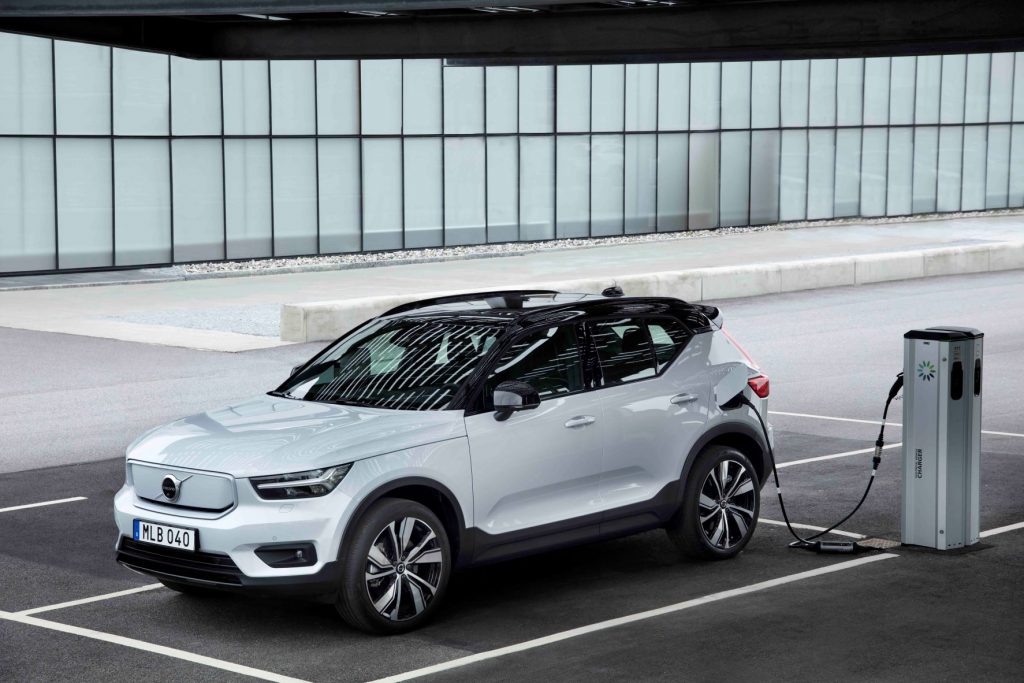
[review]
Recharge is the fully electric version of Volvo’s XC40 small SUV.
Until recently there was just the one electric model, but now you get to choose from two.
One has a single electric motor, the other comes with two of them – or ‘twin’ motors as they are known.
The twin, the one we’ve been driving, pumps out 300kW of power and an astonishing 660Nm of torque, and will physically thrust you back in the seat when you punch the throttle.
What’s it cost?
Prices start from $72,990 for the single motor, or $79,990 for the twin (plus on-roads).
You can still get petrol and even plug-in hybrid versions of the XC40, but their days are strictly numbered.
Volvo is planning to be fully electric by 2030, with EVs earmarked to account for 50 percent of sales by 2025 – just three years from now.
They’re confronting figures, but hardly surprising given that demand for EVs is growing faster than any other segment of the market – there’s a big payoff waiting for anyone that can meet this demand.
The XC40 EV’s exterior styling is chunky, compact and functional. The wheels are standouts.
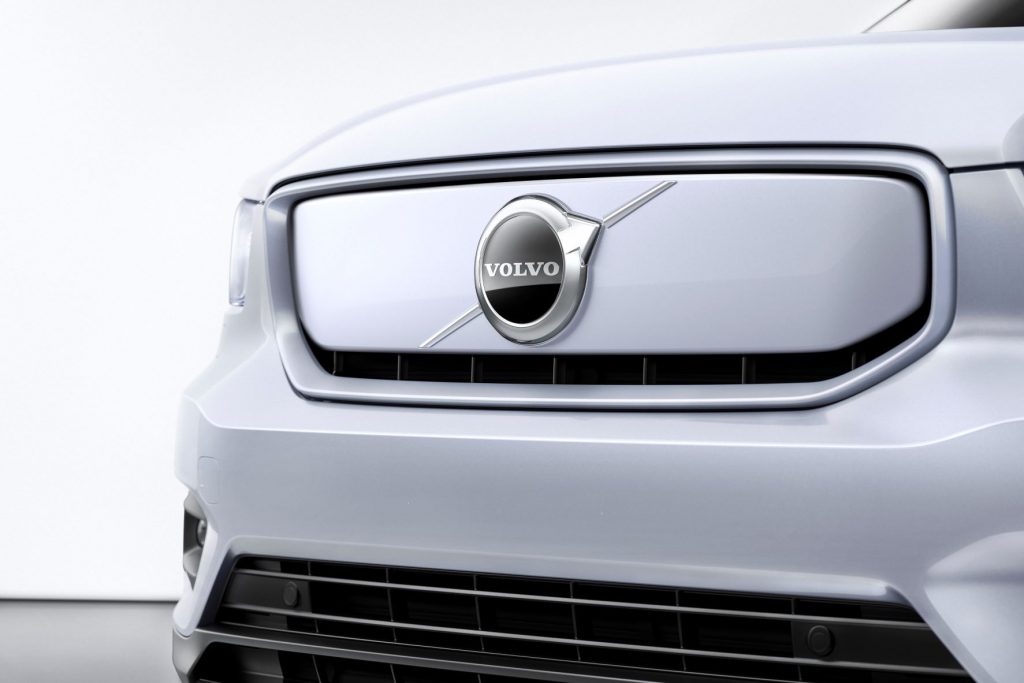
A blanked-out radiator grille separates and signifies that this is the fully electric version of the small SUV, no cooling required.
With large rear pillars and darkened glass, there’s not much over the shoulder vision available.
Although designed to seat five, XC40 can seat four comfortably – five is a stretch.
Standard equipment includes the Dynamic Chassis, 20-inch alloys, leather upholstery, R-Design highlights, two-zone climate air, heated steering wheel, heated front and rear seats, plus power folding rear headrests.
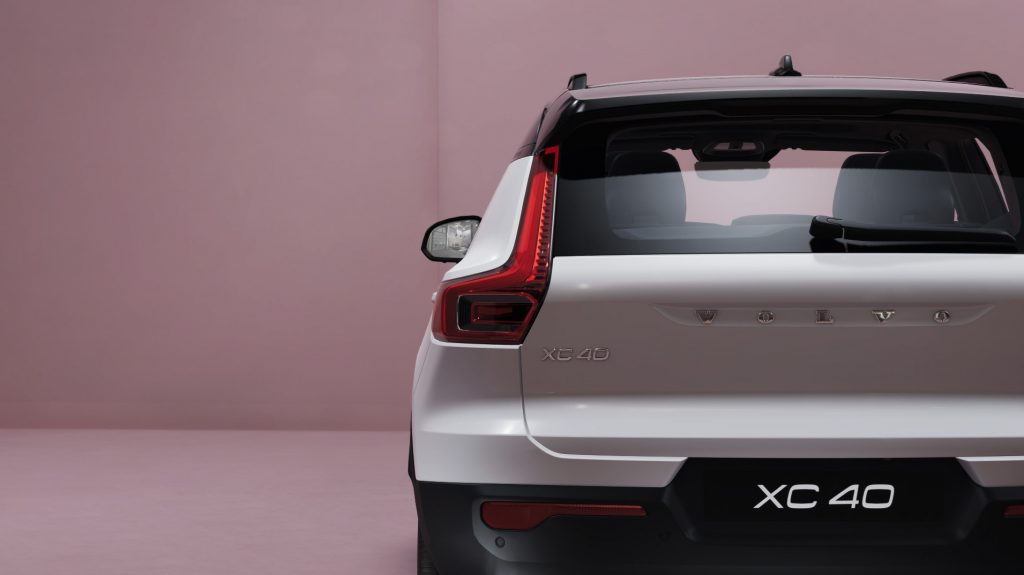
There’s also follow the road LED headlights, adaptive cruise control, 360-degree camera, wireless phone charging, auto lights and wipers, auto dimming internal and external mirrors, front and rear parking sensors, a panoramic sunroof and hands-free tailgate.
Not only is this Volvo’s first electric vehicle, it is also the first vehicle in Australia to come with a fully integrated Google Android operating system, with Google Assistant, Google Maps and Google Play Store built in.
A 9.0-inch vertically-mounted touchscreen, the centrepiece of the cabin, is just the right size and a breeze to use, with support from premium 600-watt Harman Kardon audio, with 14 speakers and unique sound processing software to optimise response.
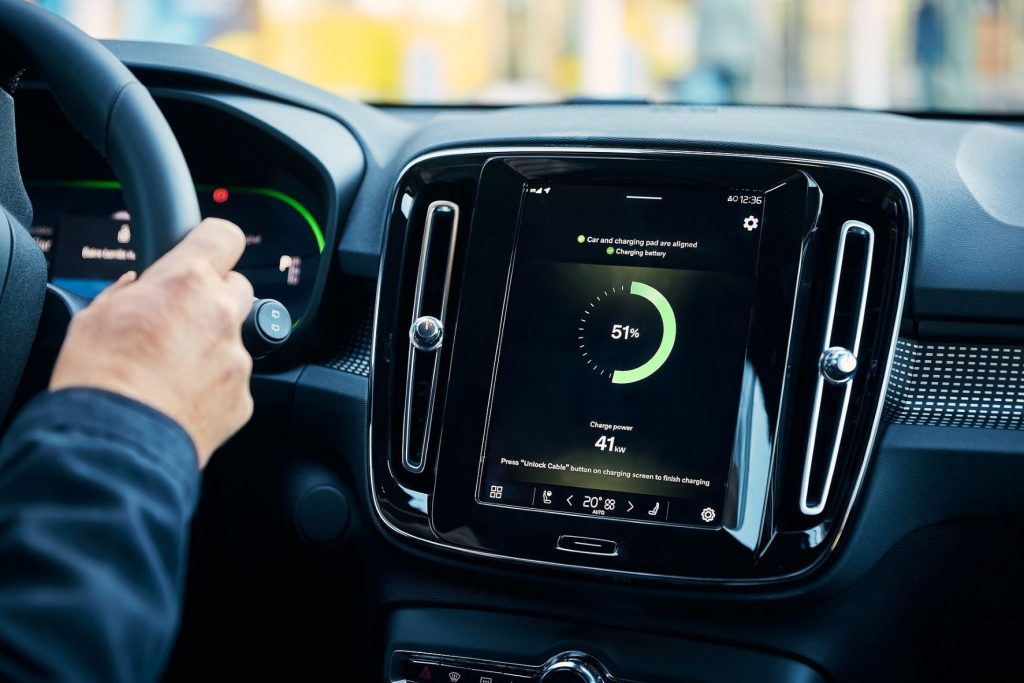
There’s also digital radio, voice activation, Bluetooth with audio streaming – but no AM radio or CD player.
Unfortunately, digital reception is limited in and around cities and if you like listening to the ABC, the lack of AM can pose a problem.
The fully digital instrument cluster can be customised and is able to project navigation between the dials.
Surprised to see no head-up display though.
XC40 scores a five-star safety rating, with seven airbags, autonomous emergency braking (AEB), lane support systems (LSS) and speed assist systems (SAS).
There’s also a rear-view camera, excellent overhead camera plus front and rear park sensors, built-in rear child booster seats, along with blind spot monitoring (BSM), forward collision warning (FCW), lane departure warning (LDW) and lane keep assist (LKA).
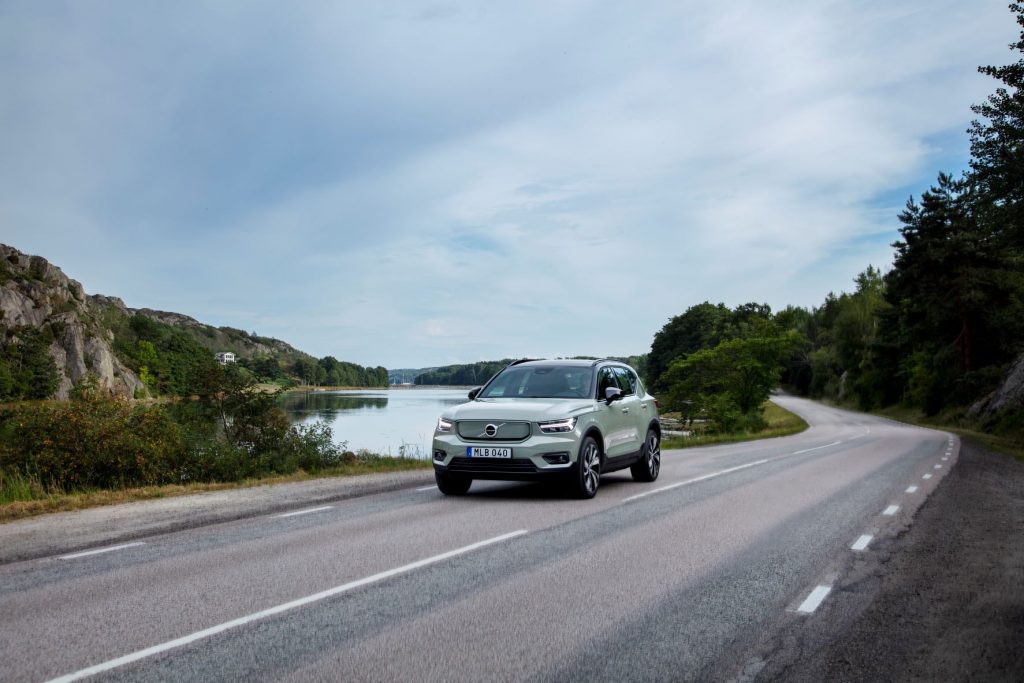
There’s no options; even colours are a no cost option.
Recharge is covered by a five-year unlimited kilometre warranty, eight-year battery warranty and comes with eight-year roadside assistance.
Servicing is free for three years or 100,000km, with service intervals of 30,000km or two years, and covers vehicle safety, air filter and tyre sealant checks and, if needed, one tyre sealant replacement.
In addition, annual wiper blade replacement and a brake fluid check is free through your dealer.
What’s it go like?
The first modern EVs were tiny little buzz boxes, that were terrible to drive and had next to no resale value.
Fast forward a few decades and the latest offerings such as the XC40 Recharge Pure Electric are guaranteed to knock your socks off.
It’s powered by a 78kWh lithium-ion battery pack, with twin 150kW electric motors for the front and rear axles that deliver all-wheel drive.
With an impressive 300kW of combined power and 660Nm of torque, it dispatches the dash from zero to 100km/h in just 4.9 seconds, making it one of Volvo’s most powerful cars ever.
This car adds new meaning to the words keyless start.
You’re not even required to push a start button. Put your foot on the brake, put it into gear and off you go – that’s it.
There’s just the one forward gear and no Sport mode, but none is really needed.
Plant it and the XC40 surges forward with V8-like urgency, minus the emissions of course.
It’s almost indecently quick, for a car not billed or marketed as a sports model.
Some scribes have criticised the XC40’s harsh ride, which sadly does not benefit from local tuning.
It can be a bit brittle, but we’ve driven much worse and it is not an issue as far as we’re concerned.
Weighing in at almost 2160kg, courtesy of the battery pack, it’s no lightweight either and this is apparent as it jounces over speed humps and the like.
But remember, 660Nm of torque more than compensates for this.
One pedal driving, when activated, brakes the car as soon as you lift off the accelerator, sending regenerative power back to the battery.
On long downhill runs it’s amazing; at other times it’s intrusive. In reality, it’s a matter of experimentation.
When fully charged XC40 Recharge Pure Electric has a claimed range of up to 418km, but only 75 of the 78 kWh are available to use.
The vehicle is designed for fast charging from zero to 80 percent in around 40 minutes, but that depends on the type of charging available.
A commonly available 50kW DC charger takes about 68 minutes (a 10A household power point needs an exhausting 40 hours from empty).
Like the old rivalry between VHS and Beta video systems, XC40 can be charged via a Type 2 CCS connection, not CHAdeMO – so be sure to check ahead.
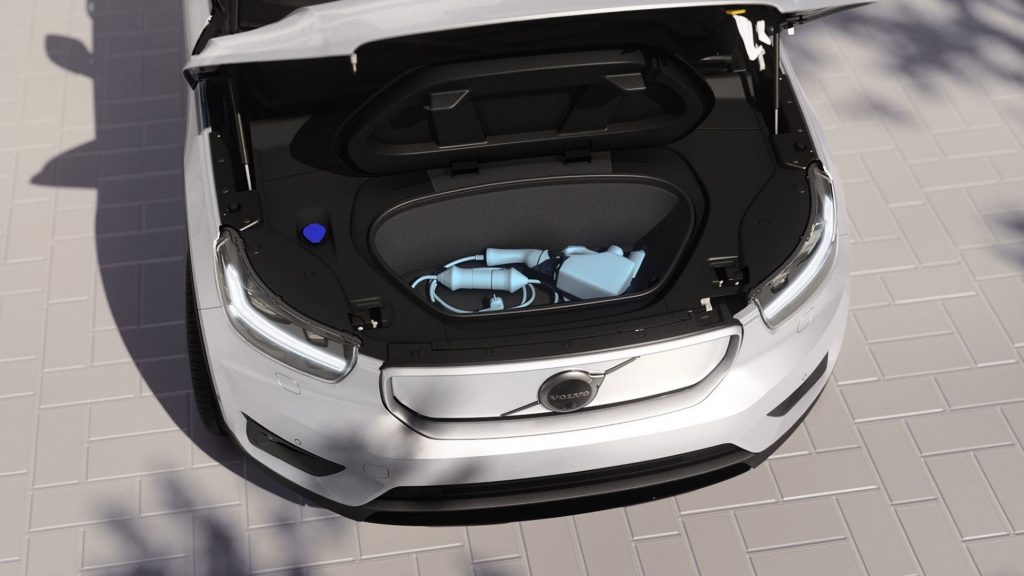
Note too that a fast-charging cable is not provided with the car. Buy it and you’ll want to invest in a wall charger.
Inside, the decor is straight out of the Scandinavian playbook with aluminium accents and contrast stitching for the leather accented seats.
The Clean Zone system removes harmful pollutants and particles from the cabin to deliver fresh air to the cabin.
Underfloor battery requirements eat into leg and boot space, with a transmission tunnel remaining but not required.
The EV has 418 litres of space, 42 litres less than the petrol model, while the ‘frunk’ up front offers another 31 litres (handy for storing the charge cable).
With power consumption rated at 25.5kWh/100km, it’s no fuel miser, but in a rain challenged week we managed to clock up 365km behind the wheel – at a rate of 21.7kWh/100km.
Driving steadily on the motorway, this figure dropped back to 19.8kWh over a distance of 70km.
What we like
- Looks
- Easy to drive
- One pedal driving
- Keyless/buttonless start
- Strong performance
- Large door storage bins
- Phone connects easily
- Don’t need to charge every day
What we don’t like
- Smallish boot
- Limited rear legroom
- Tyre repair kit
- Google assistant hopeless
- No Apple CarPlay
- No internet, means no navigation
- Can’t read electronic speed signs
- Where’s head-up display?
- Plastic trim looks tacky in places
- Touchscreen a fingerprint magnet (see pic)
- Grey boot trim looks like it’s from a ’70s VW
What over-50s need to know
Yes, the XC40 Recharge is expensive, but remember it is an electric car.
New technology has always cost more, but take comfort in the fact that it is a heap of fun to drive and offers decent range.
What’s more, we suspect people would prefer to pay this kind of money for a Volvo than some lesser brand, even though, in reality, it’s now owned by the Chinese (and built in China as well – Ed).
If you are a cashed-up retiree and looking to make the leap into the electric era, XC40 Recharge Pure Electric is a great place to start – perhaps the single motor version if you’re not a red-light racer.
It’s a neat looking car, with plenty of prestige and you will be the envy of friends. Think of the bragging rights.
If this is the future, bring it on!
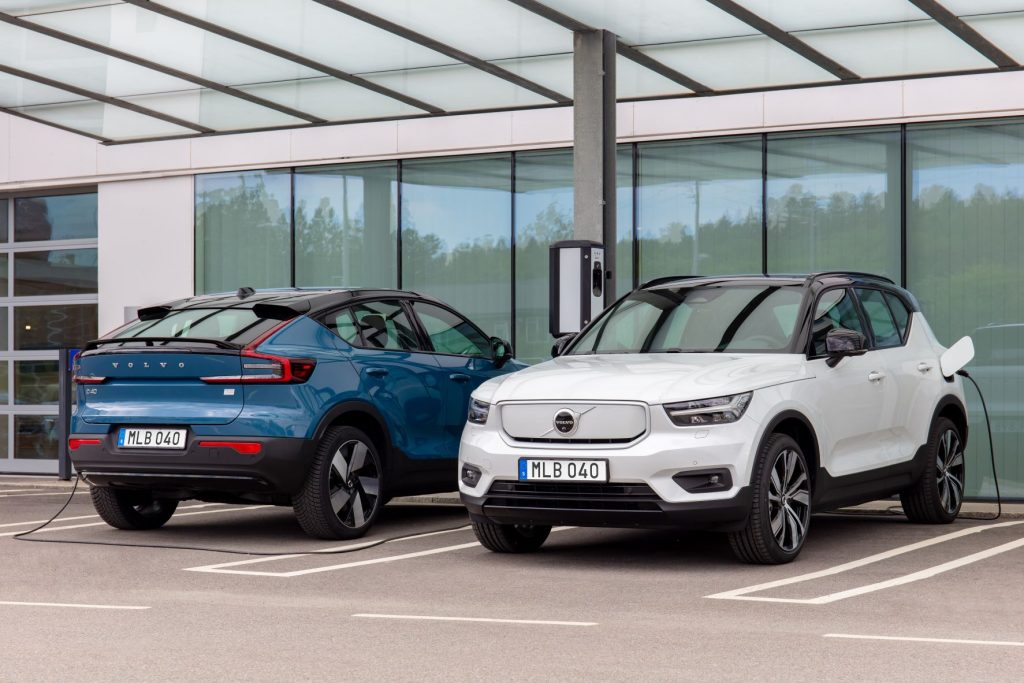
seniordriver comments
When we drove the XC40 Recharge Pure Electric, we faced many of the usual frustrations we’ve come to expect in EVs.
Despite a claimed range of 418km, we couldn’t get anything above 380km. That’s still reasonable, but we’re becoming a little annoyed that the official range is always so much higher than the achievable range.
We drove 88km on fast country roads, starting with our supposed 380km range and on arrival, battery power was reduced to 66 percent, and the screen readout indicated 270km before needing to recharge. So even though we had travelled 88km, we’d reduced the range by 110km. A few short trips increased the tripmeter reading to 96.8km, with the range reduced to 240km. Another 88km run along country roads saw battery level drop to 37 percent, and a remaining range of 130km. We left the car with our local Volvo dealer and requested they connect it to their wall charger. Four hours later (although the car may not have been connected that long), range was increased to 160km and battery charge to 44 percent.
Another fast 90km run took the battery down to 20 percent, and the range to 80km. We then connected the Recharge to mains power at 4.15 and left it charging overnight. The readout suggested it was recharging at the rate of 7-9km/hour and that proved remarkably accurate. By 10 am next morning, we had 62 percent battery charge and a range of 250km.
We agree with Chris that the styling of the XC40 is pleasing, and the interior clearly Scandinavian. However, it would be a stretch to expect three passengers to be comfortable for long in the rear seats.
The omission of the AM band on the radio is a strange choice, especially for many over-50s who enjoy listening to ABC talk radio. Also surprising is the absence of a head-up display. And we were a little taken aback to see the symbol for adaptive cruise control shows a driver with just one hand on the wheel – naughty, naughty, Volvo!
Another anomaly is Volvo’s individual way of setting some controls. Cruise control speed increases in increments of 5km/h with one tap of the button, but to increase it by single km/h, you need to hold the button – the opposite of most other cars. We also managed to zero the trip meter unintentionally because it was slow to respond to inputs, and a second click (yes, we’re impatient!) resets.
And yet again, we have to point out that lane keep when using adaptive cruise control is particularly aggressive.
Congratulations to Volvo for not charging extra for “any colour other than white”. Free servicing for three years or 100,000km, including free annual wiper blade replacement, is an unexpected bonus.
All in all, the Volvo XC40 Recharge Pure Electric is a clear indication that EVs are becoming easier to live with. And that’s just as well, because, like or not, we’re all going to have to.
